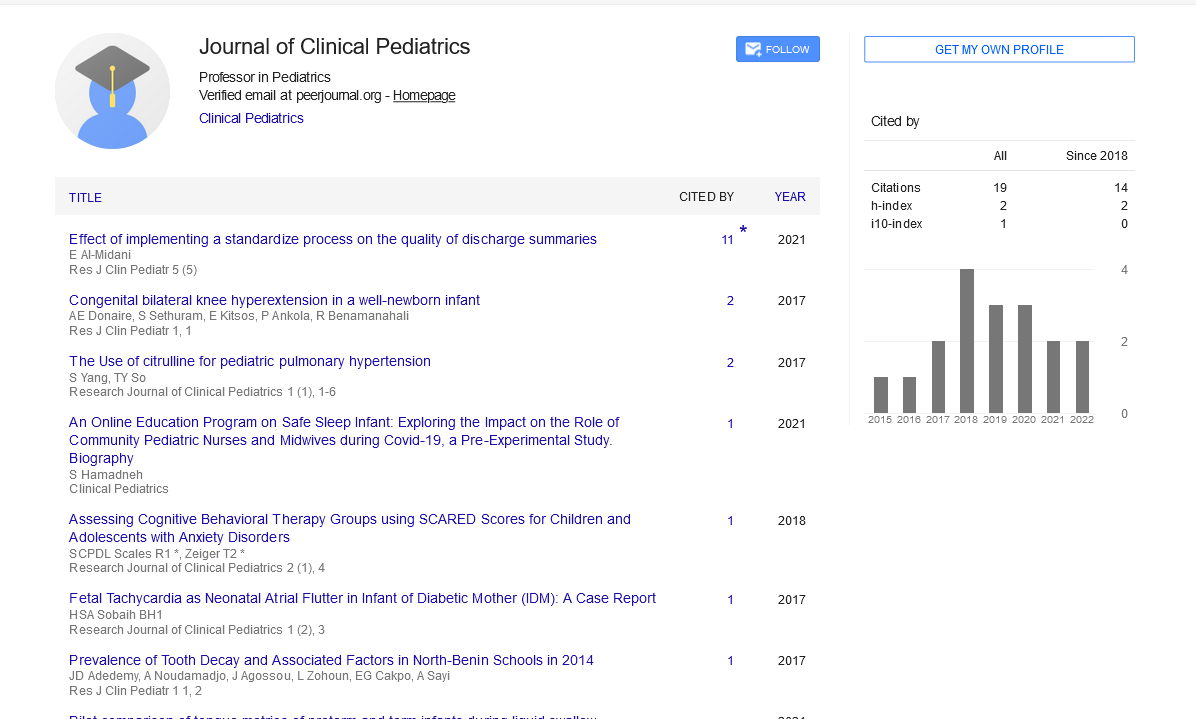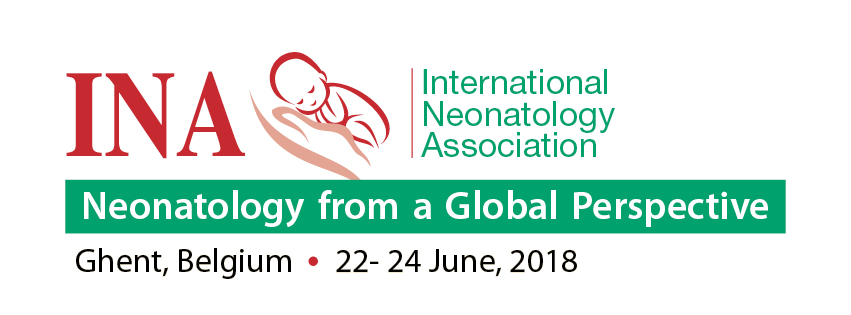Case Report, Res J Clin Pediatr Vol: 1 Issue: 1
Congenital Bilateral Knee Hyperextension in a Well-Newborn Infant
| Donaire AE*, Sethuram S, Kitsos E, Ankola P and Benamanahali R | |
| Lincoln Medical Center in affiliation with Weill-Cornell Medical College, Bronx, NY, USA | |
| Corresponding author : Donaire AE Department of Pediatrics, Lincoln Medical Center in affiliation with Weill-Cornell Medical College, Bronx, NY, USA Tel: 718-579-5030 E-mail: alvaro.donairegarcia@nychhc.org |
|
| Received: February 18, 2017 Accepted: March 28, 2017 Published: March 31, 2017 | |
| Citation: Donaire AE, Sethuram S, Kitsos E, Ankola P, Benamanahali R (2017) Congenital Bilateral Knee Hyperextension in a Well-Newborn Infant. Res J Clin Pediatr 1:1. |
Abstract
Congenital dislocation of the knee (CDK), is commonly referred with a variety of names, mainly genum recurvatum of knee, backward bending of the knee, hyperextension of the knee, dislocation of the knee, and recently as developmental dysplasia and dislocation of the knees [1]. Whichever name is used, the typical clinical features in an infant is an abnormal anterior hyperextensive position of either one or both knees noted at birth [1,2].
Keywords: Congenital dislocation; Hyperextension; Genum recurvatum
Keywords |
|
| Congenital dislocation; Hyperextension; Genum recurvatum | |
Case Report |
|
| We present the case of a baby girl born at 36.2 weeks gestation spontaneously by vaginal vertex delivery, with Apgar scores of 8 & 9 respectively. Mother is a 31 year old, primigravida, with history of WPW syndrome, and bronchial asthma. She denied any use of tobacco, alcohol or illicit drugs. Prenatal sonography done at 5 weeks, 21 weeks, and 31 weeks detected no fetal or amniotic fluid abnormalities. Mother denied any history of inherited disorders. | |
| The delivering physician referred that there was a loop of umbilical cord tightly wrapped around the lower extremities. Neonate anthropometry reported: BW of 2775 grams (14%), HC 32 cm (4%), Lt 47 cm (5%). | |
| On physical examination in the infant warmer it was noticed that the neonate had knees with hyperextension, and both hips flexed, positioning her legs over her abdomen. Right knee at rest had 20 degrees of hyperextension with up to 40 degree of passive flexion, right quadriceps felt full, suggesting muscle contraction (Figures 1a and 1b). Right hip was tight on movement with passive flexion of 70. Left knee had no hyperextension, but had limited flexion to 70 degrees, with normal muscle tone. Left hip described with a normal range of motion, but with mild varus deformity in left lower extremity. Examination of both hips for Barlow and Ortolani test revealed no clicks or clunks. Rest of the physical examination was within normal limits. Infant had a normal course in the nursery, and X-ray of the bones revealed no bony abnormalities (Figure 2). Consultation with orthopedics, genetics, and physical therapy were obtained. Orthopedics recommended physical therapy as initial treatment, and to follow for possible hip abnormalities. | |
| Figure 1a: Image showing left side of the infant. | |
| Figure 1b: Image showing right side of the infant. | |
| Figure 2: X-Ray of the infant. | |
Discussion |
|
| Congenital Knee Dislocation (CDK) is a congenital malformation characterized by hyperextension of the knee. It may present as a unilateral or bilateral condition. The estimated incidence is of 1:100 000 deliveries [1]. It is believed that is more frequent in girls than boys, and it is commonly associated with other congenital dysmorphisms [3,4]. The exact etiology is unknown, but it is believed that the malformation may be influenced by intrinsic or extrinsic factors. The intrinsic factors most commonly associated are specific syndromes (Larsen, arthrogryposis, achondroplasia), and/or neuromuscular imbalances. On the other hand, the extrinsic factors are a result of mechanical factors may alter the in-utero space, such as trauma, oligohydramnios, uterine malposition, and entwined umbilical cord around the fetal legs [1-5]. | |
| CDK is usually classified according to the grade tibiofibular anterior displacement, being said the grade 1 implies only knee hyperextension, grade 2 knee hyperextension with anterior subluxation of the tibia and fibula, and grade 3 has knee hyperextension with anterior dislocation of the knee joint and the tibia [2]. An alternative classification based on range of passive knee flexion may be used as well, grade 1 having a greater than 90°, grade 2 30-90°, and grade 3 being less than 30° [4]. | |
| As previously described, our patient had no other physical abnormalities or symptoms. We believe that the deformity in the presented case is from extrinsic factors, most likely due to the umbilical cord pulling the legs anteriorly. Fortunately no umbilical cord accidents happened. | |
| Treatment and prognosis mostly depends on the presence of additional congenital anomalies, and the onset of treatment. Mainstay treatment is non-operative, with serial casting and tractions, surgery is required only when conservative treatment fails [5]. Recent evidence suggest that treatment initiated as early as 8 hours after birth is easier and has good outcome or prognosis [6]. | |
Conclusion |
|
| Genum Recurvatum is a rare congenital condition that may be seen either as an isolated physical finding or as one of the elements of a congenital syndrome. | |
| Given the extent of the severity of the dysmorphism, in the immediate delivery it may generate anxiety among parents, family members and physicians but with immediate counseling and reassurance anxiety can be eased. | |
| It is important to recognize that if seen as an isolated finding patients improve within days to months of starting the treatment. | |
| The mainstay treatment is conservative, with physical therapy, splinting, and serial casting, which can be started as early hours after birth, but no later than a month of life. If these measures fail, corrective surgery may be done as well. | |
References |
|
|
|

